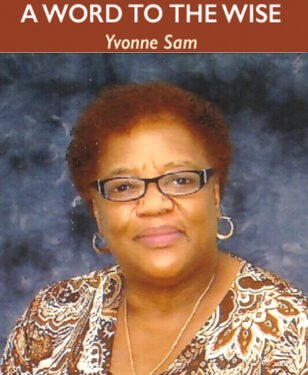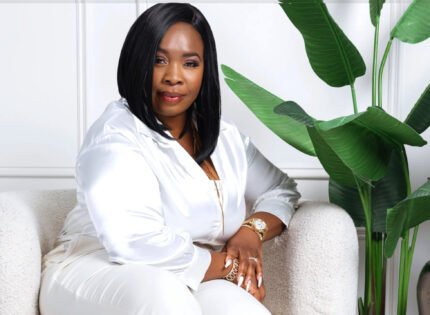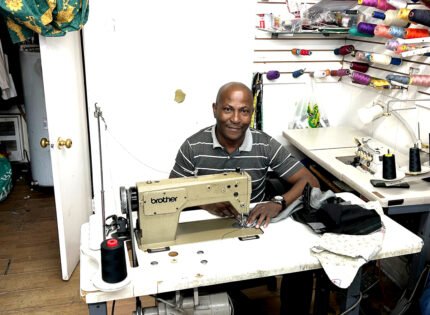 During my childhood and post pubescence period I was no stranger to how often the term “light skinned” or “dark skinned” was used to identify, categorize or stereotype people based on skin tone.
During my childhood and post pubescence period I was no stranger to how often the term “light skinned” or “dark skinned” was used to identify, categorize or stereotype people based on skin tone.
Almost on a daily basis I witnessed grown adults openly and repeatedly stating their skin preferences, along with the accompanying attributes or odium.
The irony lay in the fact that the speakers and judges were also people of color.
To the best of my recall, during my sojourn in Britain despite the subtle but really clever modification of British type racism, the issue of colorism was never a topic.
However, at a recent function, I was catapulted back to reality when I overheard this time, younger people engaged in the “hue” war. Color conscious wisecracks between young people reflect unconscious and unspoken biases- otherwise called implicit biases, that favors lighter skin.
The pain from mainstream racism hurts, but sadly the pain from colorism runs deeper. I hold firm to the belief that one cannot totally separate the issue of colorism from mainstream culture racism.
One is a spin off from the other.
While one is external in relation to the Black community, the other is internal within it. Colorism finds its roots in racism because, without racism, someone’s value and perceived superiority would not be based on the color of their skin.
As a result, a person can actually be oppressed by others due to mainstream culture racism, and at the same time be the oppressor to others by way of colorism.
Furthermore, the preference for lighter skin tones is a result of slavery and since then there are many methods people use to determine someone’s value in society.
Colorism happens often and it demands that more light and awareness be placed on the subject. The depth of the emotional pain and frustration justifies the discussion.
The book “The Willie Lynch Letter and the Making of a Slave,” is a message of divide and conquer. It was believed that by keeping the slaves divided, they would be easily controlled and thereby less of a threat.
The letter dated 1712 was supposedly delivered as a speech by Willie Lynch a British slave owner from Jamaica. He was invited to share his means of controlling slaves with Virginia slave owners.
A crucial part of his letter involves identifying two opposite groups and pitting them against each other.
A section of the letter reads: “Gentlemen, you know what your problems are; I do not need to elaborate. I am not here to enumerate your problem; I am here to introduce you to the method of solving them.
In my bag here, I have a foolproof method for controlling your black slaves. I guarantee every one of you that if installed correctly, it will control the slaves for at least 300 years. My method is simple.
Any member of your family or your overseer can use it. I have outlined a number of differences among the slaves and make the difference bigger. I use fear, distrust and envy for control.
“These methods have worked on my modest plantation in the West Indies and it will work throughout the South. Take this simple list of differences and think about them. On top of my list is “age” but it’s there only because it starts with an “A”.
The second is “color” or shade, there is intelligence, size, sex, size of plantations and status on plantations, attitude of owners, whether the slaves live in the valley, on a hill, east, west, north south, have fine hair, course hair or is tall or short.
“Now you have the differences…..Don’t forget you must pitch the old Black male vs. the young Black male, and the young Black male against the old Black male. You must use the dark skin slaves vs. the light skin slaves, and the light skin slaves vs. the dark skin slaves. You must use the female vs. the male. And the male vs. the female….”
It has been said the letter is fake. Notwithstanding, even if the document is not real, it still reflects the true mindset of white supremacy and the goal to undermine unity by promoting division.
Colorism is very real. It is a very hurtful experience for adults as well as for teenagers. Like white racism, colorism needs to be discussed more openly and often.
We need to understand how we got to the point within the Black community where many people feel they are better than someone else due to their skin tone. It is true the house slaves were products from relationships between a slave master and a female slave, so they tended to have lighter skin and the privileges which came with it.
They received special treatment by doing work inside the house and out of the hot sun. They ate better, often were taught to read and write, and they enjoyed many liberties of free citizens.
The slaves with darker skin worked in the fields, therefore it is not hard to see how animosity between the two groups can develop when kneaded or manipulated.
Even today , light skin privilege is still obvious.
After slavery, the preference for lighter skin continued and became evident within the Black community and Black people also showed a preference for lighter-skinned Black people. The division continued and light-skinned Blacks formed exclusive clubs.
The Blue Vein Society was a type of organization that aimed to identify who was “white enough” to be considered white.
In order to “belong” , the test of how light you were was, could you see your blue veins through your skin? And if they were visible , you were in.
Some had to pass the “paper bag test” to get into some churches, fraternities and nightclubs.
“The paper bag would be held against your skin. And if you were darker than the paper bag, you weren’t admitted.
We see favoritism with job opportunities and greater acceptance within the workplace. The stereotype associated with an “angry black woman” tends to be more with darker skin women.
The image of a darker skinned man is deemed to be more angry, violent and threatening, especially in encounters with law enforcement.
Colorism can also be regarded as a two way street. It is not just dark skin individuals who are picked on by lighter skin individuals. It goes both ways where light skin, brown skin and albino individuals are the target.
There is a stigma that you have to look a certain way to be considered “Black”. For that reason, bi-racial and light skin individuals struggle with their self-identity when society regards them as not being “Black” enough or truly “Black”.
When the stigma is removed and society becomes inclusive of all types of features and skin tones then and only then, can colorism healing proceed.
Then a person can feel safe in their own skin and walk confidently in all of their blackness or lightness, and maintain their rightfulness.
Aleuta continua———— The struggle continues.













